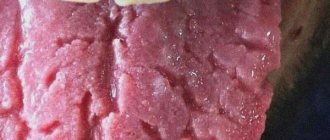Causes of green plaque on the tongue
Among the provoking factors that can cause the appearance of accumulations on the tongue are the following:
- Lack of proper oral hygiene or poor practice.
- The reasons for the appearance of green plaque often lie in diseases of the digestive system.
- Unbalanced diet and deficiency of beneficial vitamins.
- Often the reasons for the layering of substrate on the tongue lie in a decrease in the body’s defenses.
- Thrush and taking antibiotics.
- Hormonal changes and glossitis.
- Tobacco smoking, drug and alcohol consumption.
- HIV
A green coating on the tongue and a bitter taste in the mouth can indicate liver pathology, for example, hepatitis. In such a situation, the level of bilirubin often increases and jaundice develops. The gallbladder also suffers, as the flow of bile is disrupted. Patients complain of nausea, pain in the right hypochondrium, belching, heartburn, burning in the mouth. In patients, the sclera of the eyes and skin may turn yellow.
Prevention measures
To minimize any risk of an unpleasant symptom, competent and systematic prevention of diseases of the oral cavity and digestive system should be ensured. In this regard, experts suggest being guided by the following principles:
- double daily brushing of teeth and oral cavity,
- rejection of bad habits,
- normalization of diet and drinking regime,
- use of multivitamin preparations,
- undergoing preventive examinations for early diagnosis of pathologies,
- timely treatment of chronic diseases.
The tongue serves as a kind of indicator of the state of the whole organism. If spots, dense plaque of an unhealthy color, or suspicious growths appear on its surface, you should immediately run to the doctor. The sooner you seek help from a professional, the easier and faster the problem can be resolved.
- Banchenko G.V. Language is the “mirror” of the body: a clinical guide for doctors, 2000.
Shades of green patina
Typically, a white-green coating on the tongue shows the doctor that the provoking factor is a disease of the digestive system. Patients may experience prolonged constipation and flatulence, they experience belching and periodic nausea, and loss of appetite. This happens with enteritis and gastritis, colitis and pancreatitis, peptic ulcers and intoxication, enterovirus infection and irritable bowel syndrome, as well as parasitic infections.
A gray-green coating on the tongue appears due to fungal infections. This shade accompanies oral thrush. Candidiasis begins to progress when general and local immunity decreases, especially while taking antibiotics. The tongue looks dirty if the patient is sick:
- Pharyngitis or sinusitis;
- Bronchitis or pneumonia;
- Adenoiditis or tonsillitis;
- Asthma or pyelonephritis;
- Laryngitis or tuberculosis;
A serious symptom is a dark green coating on the tongue. This is a signal that acute inflammatory processes are occurring in the body. Internal organs suffer and tissue degeneration develops. Dark areas on the receptor organ indicate dysfunction of the spleen and gall bladder. It could also be cholera. Black spots appear with angina and acidosis, with kidney dysfunction and hypoxia, as well as with Crohn's disease.
Main symptoms
Since the greenish tint of the tongue is the primary sign of the development or course of the disease , upon examination it is identified by a number of signs: the thickness and density of the film is taken into account, and the difficulty of its separation from the surface of the mucous membrane of the tongue is assessed.
Main symptoms:
- Thickness. A thick layer of plaque indicates serious problems, since the pathogen has been in the body for a long time. Thin, mild plaque is often the result of infections (viruses, colds).
- Easy to separate. The plaque, which is soft and loose in structure, is easily removed, which indicates the initial stage of the disease. The manifestation of severe pathology is indicated by a dense plaque, which is removed with great difficulty.
- Consistency. Plaque can be dry, greasy, viscous, moist or curdled.
When examining a patient, the doctor first looks at the color of the tongue, so on the day of the appointment it is worth excluding any coloring foods from the diet.
Diagnostics
Before a full examination is scheduled, the doctor examines the oral cavity using special medical instruments - a spatula. By the way the greenish coating looks and the enlarged taste buds of the tongue, by the relief surface of the muscular organ, as well as by the thickness of the accumulations and their location, it is not difficult for an experienced doctor to understand the causes of the unpleasant phenomenon. In addition, doctors often prescribe general tests, ultrasound and FGDS.
Adults should initially consult a therapist; children should be shown to a pediatrician. If necessary, patients are referred to the following specialists:
- Gastroenterologist;
- Dentist;
- Infectious disease specialist;
- Otolaryngologist;
- Pulmonologist;
- Endocrinologist;
- Toxicologist;
Such manipulation as removing plaque is very important. This prevents the development of pathogenic microflora and ensures healthy oral mucosa. By the way, clean crowns prevent the appearance of caries - another provoking factor for the appearance of accumulations on the tongue.
Associated manifestations
You need to pay attention not only to the green color of the formations, but also to the accompanying signs :
- The thickness of the plaque is what determines the stage of the disease.
If it is insignificant, then the pathology is just beginning to develop, which means it can be cured faster. Thick deposits indicate an old, possibly advanced disease. - Ease of removal - if removing plaque does not cause difficulties, this may indicate the absence of serious diseases.
With pathological changes in the body, the plaque will be dense, and it cannot be eliminated by hygienic procedures. - Consistency - depending on the underlying disease, the green plaque can be wet, greasy to the touch, dry, or cheesy.
- Location - localization of deposits in different parts of the tongue will help the specialist make a more accurate diagnosis.
This diagram shows the connection between certain areas of the tongue and internal organs:
During a visual examination, the doctor must evaluate all of the listed characteristics using a special spatula, taking into account the mobility of the tongue, the relief and the condition of the taste buds.
If a serious illness is suspected, the presence of accompanying symptoms must be confirmed.
Green coating on a child's tongue
This unpleasant phenomenon is rare in children. This coloring can appear from eating vegetables such as spinach. A green coating on a child’s tongue also occurs due to poor oral care. After all, in such a situation, pathogenic bacteria are not removed. When their growth rate is high, diseases spread quickly. The tongue becomes covered with dropsy and ulcers. They bring discomfort and pain. Main provoking factors:
- Kidney failure in children;
- Gastrointestinal pathologies;
- Poor nutrition and vitamin deficiency;
- Low level of body defenses;
- Fungal infection;
- Antibiotics;
- Hormonal changes in adolescents;
A green coating on a baby's tongue may be a response to the introduction of complementary foods. After all, the baby’s immune system is not yet fully formed. He can easily catch candidiasis through contact with surrounding objects. Since there are many causes of the pathology, a visit to the doctor is necessary to clarify the origin of the accumulations.
Preventive measures
The following manipulations are recommended as preventive measures to prevent the formation of green plaque:
- Perform hygienic procedures to clean not only the teeth, but also the entire oral cavity in a timely and high-quality manner.
- Review your diet, getting rid of harmful foods, such as: smoked foods, fried and sweet foods, semi-finished products, products containing preservatives and dyes. When creating a menu, preference should be given to fresh vegetables, fruits, cereals, dried fruits, nuts and legumes.
- Bad habits cause many problems. Living with caution, using suspicious pleasure is a relic of the past. Nothing improves health and psycho-emotional state better than sports and an active lifestyle.
- Don't forget about regular cleaning of your home. Accumulated dust often creates problems in the upper respiratory tract.
- Regularly support the immune system by enriching the body with complex vitamins and fresh fruits/vegetables.
- You need to ventilate your home every day to purify the air and create a healthy microclimate.
- If green plaque is detected, you should not self-medicate, much less ignore the symptom. Early diagnosis helps to quickly eliminate health problems, while reducing treatment time and costs.
After visiting the doctor, you must follow all instructions, otherwise the treatment will be ineffective.
Treatment of green plaque
If the deposits are the result of a disease, it must be treated. In any case, it is important to carry out proper hygiene procedures at home and not skip professional oral hygiene. Dental health largely depends on this procedure. After every meal you should rinse your mouth. You can use plain water, and if necessary, use special antiseptics. They are good at eliminating deposits on the muscle organ that are caused by pathological flora.
- Miramistin and chlorophyllipt have proven themselves well. The solutions have anti-inflammatory, antibacterial and antiviral effects.
- In case of bile stagnation, treatment is carried out with drugs such as Cholenzyme, Lyobil, Vigeratin. The main therapy program is supplemented with Tanacechol or Allochol.
- For problems with the liver, hepatoprotectors are prescribed, which restore its functions through cell regeneration. Such drugs are Legalon, Karsil and others.
- Decreased immunity and viral infection are eliminated with antiviral drugs.
- When the deposits are fungal in nature, the patient undergoes a course of therapy with antifungal drugs: Fluconazole, Mikosist and others.
- Intoxication of the body requires adsorbents, for example, Eneterosgel.
Vitamin complexes are also prescribed. Strict adherence to doctor's instructions and careful hygiene are the basis for eliminating green accumulations on the tongue.
Is it possible to use traditional medicine?
To eliminate the symptom (namely, the manifestations, but not the treatment of the underlying disease!) You can use vegetable oil. A small amount should be kept in the mouth for 15 minutes. Then spit it out and clean the surface of the tongue using a brush or a special scraper.
Gargling with medicinal herbs will help in treatment
It is also recommended to rinse your mouth with a decoction of herbs: mint, calendula, St. John's wort. To do this you need to take 15 grams. each of the herbs, brew the mixture in 250 ml of boiling water and let the product brew. You can wipe the surface of the tongue with a soda solution: 2 tbsp. You need to dilute it in 150 ml of water, then moisten a cotton pad or gauze pad in the resulting solution and cleanse it. The procedure should be repeated twice a day.
It is important to immediately note that traditional medicine can only act as a supportive therapy, but not the main one! Do not try to self-medicate, because you can not only aggravate the situation, but also trigger the pathology, bring it to the stage of development when complex and lengthy treatment, possibly even surgery, is required. You can use “grandmother’s” recipes only after agreement with your doctor.









